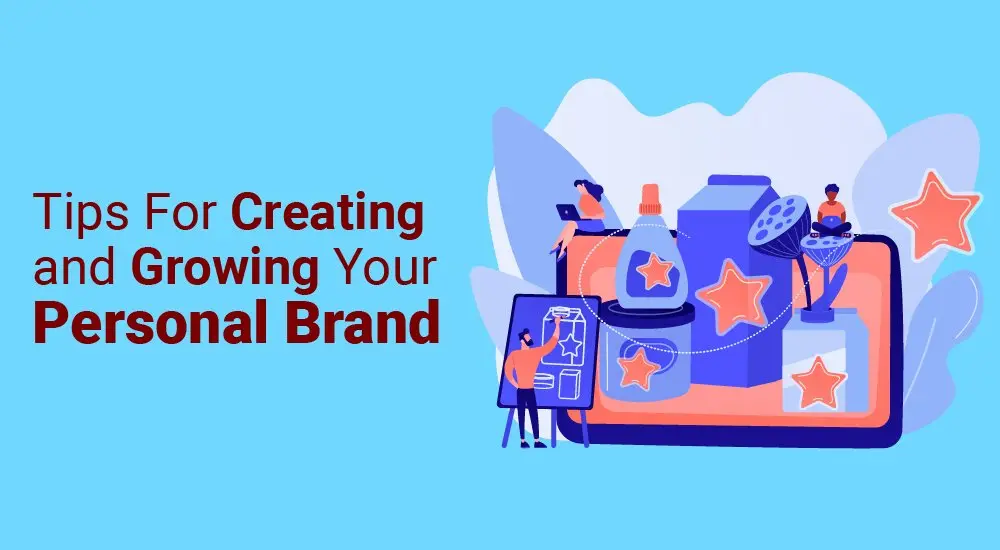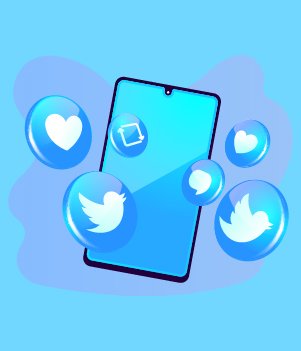
10 steps for building your brand and finding your audience
Table of Contents
Introduction

The idea of building your own personal brand can feel like a mystical quest at first. We live in a society that is very focused on results. We don’t see the time, the effort, and the research that our heroes have put in to get to where they are.
Personal brands are essential for any of us looking to build a business or service.
Personal brands allow us to stand out from the crowd, connect with people personally, connect with people we admire, and cultivate our dream audience.
But, creating your own personal brand can be a daunting task. We have put together this 10 step guide to taking you from… well, you to a fully-fledged personal brand.
This is a complete guide to building an authentic personal brand that will resonate with your audience.
What is a Personal Brand?
Years ago, ‘brands’ were reserved exclusively for companies. They would spend millions on their slogans, logos, advertisements, and reputation.
Then came celebrities who were able to take this business principle and turn it into something that could benefit them as individuals. Stars started to advertise cars, perfume, and food.
Before long, they were bringing out their own products that people bought in their millions.
Families like the Kardashians proved that with the right branding, anything is possible.
A Personal Brand Is Not Just For Celebrities

So, why should that matter to you? As someone looking to start a business, being able to build and harness your personal brand can be rewarding.
Think about your heroes; the likelihood is you don’t know most of them. But you still admire them. Why? Because they had a captivating personal brand that drew you in.
With some smart work and research, you can also create a personal brand that resonates with people. This will help you build your business and create the audience you’ve always dreamed of.
Tips For Developing Your Brand

1. Figure Out Who You Are
 We understand that this isn’t a small task. However, we do have some good news for you.
We understand that this isn’t a small task. However, we do have some good news for you.
You don’t have to get it right the first time.
Many celebrities, companies, and business people have been through huge rebrandings throughout their careers.
Taylor Swift started as a country singer.
Before Chris Pratt was the chiseled face of The multi-million dollar Guardians of the Galaxy Franchise, he was playing a washed-up, overweight bit part in Parks and Recs.
Even Oprah, the queen of personal brands, went through several TV shows before she found her winning formula.
So, where do you start when building your personal brand? Well, with you. While this may seem obvious many people make this mistake when starting on their journey.
It is so tempting to craft a persona and project a version of yourself that is ‘more’ than who you really are. However, you’ll struggle to find your audience if you aren’t genuine.
Monica Lin, says “People can see right through a disingenuous act.”
It is better to be the best version of yourself than to be a half baked version of another. Choosing to be your genuine self can also make it easier for you to commit to the long term act of building your personal brand.
Many people who wear a mask or put up a front burn out quickly as maintaining their pretense takes up energy they could be using to further their reach.
“Be genuine. It will make it much easier to manage your personal brand on a daily basis,” says William Harris.
When building your personal brand, the first step is to figure out what that brand is. Whilst this is not strictly a soul searching process, it will involve some reflection on who you are and what you love.
“Be a master of your craft, skillset, or industry before starting a personal brand. Then your content will help amplify who you are,” says Justin Wu
Pick up a notebook and pen and jot down your responses to the following prompts. While you’re at it, why not take this opportunity to start building a journaling habit – successful people journal.
Keep this list. You will need to refer back to this later.
Here are some prompts that will help you to discover what your personal brand could involve:
- Where in life do I excel?
- Where in life do other people think I excel?*
- What motivates me?
- What have people asked me to help them with?*
- What types of work can I do for hours without getting bored or tired?
- What types of work leave me exhausted and make me miserable?
- What are your personal values?
*With these questions, feel free to ask the people who you trust in your social circles. Ask different types of people. Get as diverse a view as possible. Other people are more likely to see our strengths than we are a lot of the time.
The next step is to take these answers and work out how to make them brandable. In the next section, we’ll focus on Finding Your Niche, so at this point, don’t be afraid to focus on one specific area of who you are.
As personal brands grow, they expand and flourish, opening new doors to us.
2. Find Your Niche
 Many people are scared by this idea—particularly creative people.
Many people are scared by this idea—particularly creative people.
We want to do everything at once, especially when projects are shiny and new.
It’s so easy to get caught up in the big picture before you’ve got started.
While choice can be inspiring, it can also lead to paralyzing indecision.
There is nothing scarier than the blank page. When this happens to us, we think about this quote from St David:
‘Do the little things well, and the big things will take care of themselves.’
A strong, well-thought-out niche will be the foundation on top of which you build your personal brand. It will be the touchstone that you return to when you feel lost and when things get tough.
The internet is a huge place with a huge audience. Thanks to this, there is a little corner for each of us. In this corner, we can share who we authentically are in our own way without stealing other brands ‘thing’.
“Carve a niche, and then carve a niche within your niche. The best personal brands are very specific. Adam Smiley Poswolsky
There is a difficult balance that needs to be found when building a personal brand. It needs to reflect your authentic self, but you also need to approach it like a business.
This is why, no matter how resistant you are to the idea, your personal brand needs a niche. You wouldn’t start a business that didn’t have one, so it is just as essential to your personal brand.
“Keep your message and content consistent to one niche topic to become memorable within a targeted community.” Manos Accelerator
Here are some benefits to establishing your niche as early as possible in your personal brand building journey:
- It helps you find your ideal customer.
- It gives you an area of focus when improving your skills.
- It’s easier to become a recognized expert in a small niche than on a broad topic.
- You can make really targeted content to build your brand.
- A niche stops you from overstretching yourself – you want depth, not variety.
- With a niche its more comfortable to make decisions about what direction you want to grow your business
- With a niche, you will find it easier to collaborate with others in your industry.
- Defining your niches is the first step in building a story your audience will connect with
- Niches are more profitable than a scattergun approach.
- Audiences love consistency
The benefits of finding a niche far outweigh the negatives. Choosing one early on in your journey will help you to make smart and effective decisions from the get-go. In the long run, it will pay dividends for you.
Want an example of a business that nailed its niche? Check out Goodreads. This company made a website purely for people to create lists of books they wanted to read.
Amazon bought Goodreads for $150,000,000, and the site has over 16 million daily users.
3. Inject Your Personality Into Your Brand
 When you are thinking about how to inject your personality into your personal brand, we recommend exploring the following three areas:
When you are thinking about how to inject your personality into your personal brand, we recommend exploring the following three areas:
- Your Brand Values
- Your Unique Service Proposition
- Tell your Story
We will be exploring these three things in this section.
Your Brand Values
Remember in section one when we told you to write down a list of your personal values? Well, find that list. When building a personal brand, your personal values have to align with your brand values directly.
Without this, you will lose that authenticity that you’ve been working so hard to build in the last two sections.
If you’re struggling to quantify your personal values, then check out this list from leading personal development expert James Clear.
This contains over 50 categories of value that Clear believes audiences value and ones that individuals should strive for. If you’re feeling stuck, this is a good place to start.
Finding your niche will help you define what your values are even further. Every industry and niche have their own social contracts. Self-help gurus never call people fat on Twitter.
Entrepreneurs promote working hard. Minimalists don’t go on massive shopping sprees and post hauls on YouTube. You get the idea…
Your Unique Service Proposition
Again, remember that for it to be successful, you need to approach your personal brand as a business and treat it with the same respect you would in a 9-5 job.
If you were pitching a business idea or networking at an industry conference, you would have a USP (Unique Service Proposition) in your back pocket.
What is a USP?
Well, a term for it that you might be more familiar with is the elevator pitch.
You want to sum up: who you are, what you stand for, and why someone should trust you, preferably in 3 sentences or less.
We understand that sounds a little terrifying. But don’t worry, the more you get to know yourself and your personal brand, the better you will get at it. Like all good things, this will take time and practice to get right.
It is worth starting to think about this as early as possible in your journey. You never know who you might meet tomorrow…
Tell Your Story
“The most effective personal branding strategy these days is to build a true narrative – single character monologues are boring in Tinseltown, and even more boring for your personal brand.” Allen Garnett
Telling a story of your personal brand kills two birds with one stone. It builds an audience for you, and it allows them to see and bond with your authentic self.
The easiest way to get this story across is through videos, audio recordings, and written content. This gives your audience and potential customers a chance to learn about you in your own words and hear your unique voice.
“The most personal way to communicate online is with video. Simply use your smartphone to video message your clients, make a personal connection with prospective clients and connect with co-workers.
After all, you always have your smartphone on you!” Pelpina Trip
Not sure where to start, try starting a podcast!
4. Research Your Niche and Follow The Experts
 “Find out who the thought leaders are in whatever field you’re interested in, and don’t just follow them,” says Gresh.
“Find out who the thought leaders are in whatever field you’re interested in, and don’t just follow them,” says Gresh.
“Go online and find out if they have blogs, or where they contribute their thinking.
Look for people who are successful and examine what they’re doing.
Imitate them, and then do one better.”
The most common advice given to fiction authors is to read the genre they want to write in. To read the genre-defining classics. To read the hits. To read the flops. To read the current bestseller. To read the forgotten voices.
Only then can they truly understand what the genre is, what paths have already been trodden, and find their gap in the market.
The same goes for building personal brands, businesses and establishing niches. Here we’re big fans of the following concept:
‘Work smarter, not harder.’
We’re not saying, don’t work hard. We are saying there is no need to make mistakes that have already been made by someone else.
Earlier in this article, we told you not to copy already established brands and to be yourself. This advice still stands, but what it doesn’t mean is that you cannot study and learn from these brands.
Mainly if their stories can save you time, energy, and money.
When researching building your personal brand, you will see many people advising you to find a mentor—someone who is an incredibly successful thought-leader in your industry.
Whilst this is great advice, and we will touch more on it later, it is most helpful for people who have already established their personal brand and want to move forward (so remember this tip for the future).
It is challenging to find a valuable mentor when you are the new kid on the block. However, we have some good news for you. The internet exists.
At your fingertips, you have access to hundreds of thousands of hours of interviews with, TeD talks by classes by hugely successful business people.
In the early stages of building your personal brand, you can use these resources to learn as much from the world’s experts.
We recommend studying influential people’s philosophy (even if they aren’t in your industry) like Barack Obama, Elon Musk, and Steve Jobs.
As well as looking at the more pragmatic advice from smaller people within your niche and industry.
It is important to know your niche and what happened before you arrived for a few reasons. Here are some common things that happen when people do not research:
- Your super unique business idea is already being done successfully by someone else.
- Your super unique business idea was tried before and fail miserably.
- There is some excellent software out there that can make your life and business a lot easier to run.
- It is hard to turn a profit in one niche, but a very similar niche is a veritable cash cow.
Research always pays off in the long run. The early you put in the work, the sooner you’ll reap the benefits of it. As the old (very cliche) saying goes:
‘Failing to plan is planning to fail.’
All that being said, sometimes things go wrong. At this point, turn to people like Steve Jobs and Walt Disney, who suffered huge setbacks but never gave up. We have a lot to learn from the experts.
“I think it’s important to have a good hard failure when you’re young. I learned a lot out of that. Because it makes you kind of aware of what can happen to you. ” Walt Disney
Check out these amazing podcasts by leaders in the business world for more inspiration.
5. Define and Target Your Audience
 This section relies heavily on you knowing your niche.
This section relies heavily on you knowing your niche.
If you haven’t worked that out yet, it’s time to do it.
When you have, you can continue reading.
We will begin this section by learning from the experts (see, you’re already following our advice from the last section).
A Case Study
Let’s think about Goodreads again (the book listing site that Amazon bought for $150 million and has 16 million daily users) and use them as an example.
Their USP is that they are a site for making ‘to be read’ lists. They created a database that allows users to put nearly every book ever published on their lists.
Who is their target audience?
Book lovers. Particularly organized book lovers. Ones that are curious about discovering new things to read and want to keep track of books they think they might love.
How do they target their current audience and find new ones?
Goodreads began by advertising the places where these book lovers would see. In bookshops, on book-related forums, they invested heavily in early YouTube creators.
After Amazon took over the company, this targeting became even more intense.
Define and Target Your Audience
Now that we have seen how effective finding your target audience can be, let’s look at this task’s practicalities.
Firstly what is a target audience?
In business and branding, we define this as a group of overlapping demographics that you will believe will be most receptive to your message and brand. These demographics can include:
- Age
- Gender
- Location
- Income
- Employment Status
- Level of Education
Using this system, you can create an idea of what your average or ideal audience member (or customer) looks like. Knowing this will help you create targeted content that they like.
This can save you time, money, and energy. For example, older audiences like to read their content, whereas Gen Z is more likely to watch or listen to you.
Many people are doing in-depth research into audience habits across different platforms. Follow these experts’ advice and save yourself time when beginning to produce content.
For example, here is the breakdown of what the average Youtube user looks like.
When you have been producing content for a little while, you can use tools like Google Analytics to gather more detailed information about your audience.
Remember that your target audience will not always line up with your actual audience. You can roll with this, or you may want to change up your content to find a new audience more inline with your vision.
6.Embrace Networking
 We have talked briefly about preparing your elevator pitch (USP) for networking opportunities.
We have talked briefly about preparing your elevator pitch (USP) for networking opportunities.
Now, we’re going to take things a little bit further.
85% of the jobs in the US right now involve networking. It’s something that just can’t be avoided if you want to build a personal brand.
We understand that this scares many people, but networking is a lot simpler than you think.
Networking can be an easy way to find new business leads, new audiences and grow your social circle. But like with everything else we’ve talked about so far, when networking, remember to work smarter, not harder.
Smart networking hinges on being genuine with the people you communicate with. Here is a quick guide to smart networking:
- Meet people in person (when possible)
- Engage with their content
- Congratulate them on their successes
- Thank them personally for any help they give you
- Offer them help and guidance.
- Communicate with them regularly.
When researching your industry and niche in section four, you probably discovered that your industry has 3 or 4 significant yearly events that provide excellent networking opportunities. Try and get involved in these industry events.
Look for local events as well. Regularly attending events like this will allow you to establish your brand with the right people. You also never know what kind of opportunities you might come across during events like this.
The key to building your personal brand through networking is to have positive interactions that provide value to the people you interact with. This value doesn’t necessarily need to be monetary; knowledge has its own value.
‘My quick tip on personal branding is to remember you are your brand, no matter what your current job is, what project you happen to be working on at any one time, or whatever the priority happens to be today… always keep in mind the impact you leave on others and remember all we have is our own reputation, and that’s our brand, so be awesome to each other!’ Jacob Shwirtz
If you can solve a problem, or put an acquaintance in touch with someone who can solve that problem for them, they will remember you.
They will leave with a positive view of your personal brand and are more likely to talk to others about you.
Speaking of value, here is our best networking tip – following up is the most important step of the networking process.
What do we mean by this? It is all well and good to meet someone at an event and have a pleasant interaction. If you don’t follow up, all your hard work has gone to waste.
Following up can be as simple as reaching out to them on Linkedin and inviting them out for coffee. You could even invite them to be on your Podcast – even if you live in a different country.
7. Build Your Brand Through Outreach
 People often confuse the ‘personal’ in personal brand to mean alone.
People often confuse the ‘personal’ in personal brand to mean alone.
They think that a successful personal brand is built off their hard work alone and asking other people for help is failing.
Not only is this unhealthy, but it’s a terrible way to build a business and brand.
If you followed the steps in section four correctly, then you will have read the stories of many successful people—no one who achieved their success in a vacuum.
One of the key steps in the personal brand building process is growth through outreach.
Here are three of our favorite ways to build your brand through outreach:
- Through events and knowledge sharing
- Through social media*
- Through Guest Posts
*We will cover this in section 8.
Outreach through events and knowledge sharing
We have already talked about networking. This can be an excellent outreach method. However, what we want to talk about now is the idea of giving back to your audience and building a community.
Earlier, we mentioned that one of the benefits of picking a niche is to establish yourself as one of the leading experts in it. A great way to do this is to talk at events and host classes/workshops online.
This has the added benefit of adding value to your audience’s experience.
When you are beginning your journey, one of the best ways to outreach through knowledge sharing is to start a Youtube Channel or Podcast.
This can lead to you meeting new connections and giving people a greater understanding of your brand.
We have only had time to cover this briefly today; for a more in-depth look at the subject, check out this article.
Outreach through guest posts
Writing guest posts is such a simple yet effective way to promote yourself that it almost feels too good to be true.
Here are some of the benefits of writing guest posts:
- Exposes you to new audiences
- You’re piggybacking on someone else’s success.
- It expands your network.
- You can collaborate with people you admire
- Eventually, you might get paid to do it.
Guest posts don’t necessarily mean writing an article for someone else’s blog anymore. Social media has created a whole host of new ways to collaborate and ‘guest post’ online.
Your guest post might take the form of appearing in someone’s Youtube video to talk about your niche or even being interviewed for a podcast.
You might be asked to run someone’s Instagram stories for the day to give their audience an insight into what you do.
This is the time to flex your creative muscles and create memorable content that will build your brand. Remember to stay positive and always provide value for those choosing to spend their time viewing your content.
8. Grow Your Online Presence
 We have talked about growing your presence online briefly throughout this article and for a good reason.
We have talked about growing your presence online briefly throughout this article and for a good reason.
When it comes to growing your personal brand, the internet provides unrivaled audiences and very little expense.
Here’s an example of how much the internet and social media have changed the game in the last decade.
The Finale of Friends broke records for being one of the most tuned into TV events of all time.
This final episode had millions spent on it and was watched live by 51.1 million people.
Pewdiepie is a Youtuber. He broadcasts from his bedroom, initially using a small, cheap webcam and his computer. His audience is over twice the size that of the final episode of Friends.
He has 108 million subscribers and regularly gets millions of views on his videos.
The internet has given the power to smaller creators. And it can do the same for your personal brand. In this section, we’re going to briefly discuss the smartest ways to do this.
Start a website for your brand.
 Websites are essential for personal branding.
Websites are essential for personal branding.
In a world where we rarely hand out business cards, a personal website becomes ever more useful.
Perhaps you’ve noticed that we have linked to many of the personal websites belonging to the people we’ve quoted throughout this article.
Having a fully functioning website is key to displaying your brand and having others in your industry take you seriously.
If you’re not a website designer yourself, we recommend that you outsource this task. But still, give your input and make sure that the website represents you and your brand.
Make sure it has all the traditional pages, plugins, links that your competitors and collaborators have.
Consider blogging, vlogging, podcasting.
 We mentioned above that sharing your voice is one of the best ways to connect with your audience.
We mentioned above that sharing your voice is one of the best ways to connect with your audience.
It allows them to understand your brand, making them feel like they know you as a person.
We are more likely to buy from people we trust and like, rather than a faceless organization.
That is why we are all drawn in by charming local grocery stores and restaurants.
We have guides on how to start both podcasts and youtube channels. We recommend starting with one of these, if not both. Here is a guide on building your audience through Podcasting.
 Before we start talking about how to grow your brand through social media, we would like to talk about prioritizing.
Before we start talking about how to grow your brand through social media, we would like to talk about prioritizing.
Many people find that when they begin their brand, they devote too much time to social media.
This is understandable.
It is very easy to feel productive whilst achieving very little on these platforms. They’re built that way to keep us using them.
So, while these can be fantastic tools for growing your brand, they shouldn’t be seen as replacements for networking and creating quality content that adds value to your audience’s lives.
Here are two quick social media tips:
- Not all platforms are relevant to all businesses. However, if your competitors are on these platforms, make sure you are too.
- There are right and wrong times to publish your content; there is also such a thing as publishing too much content.
 Looking for the place to tell your story and get feedback (sometimes brutally honest) from your audience.
Looking for the place to tell your story and get feedback (sometimes brutally honest) from your audience.
Then Twitter is the place for that.
Twitter is a platform built entirely around small interactions.
It is also a great place to network.
However, the key to Twitter is to understand the platform before posting on it. Unlike on Linkedin and Facebook, content designed for other platforms does not translate well to Twitter.
This can be a great place to chime in on issues surrounding your brand values and to show a lighter side to who you are.
You should remember to stay professional and be polite. Do not share or tweet anything you think you will regret in the long term.
If your competitors are on Twitter, then you should be too.
 If Twitter is a thought sharing platform, then Instagram is about selling a lifestyle.
If Twitter is a thought sharing platform, then Instagram is about selling a lifestyle.
We say selling, not sharing, as Instagram is increasingly gearing itself towards social media’s commercial side.
This is a place for you to share a cultivated vision of your brand and lifestyle.
Instagram is a visual platform, so it is important to produce visually appealing content.
This may be worth outsourcing. It is also very time-consuming, so we would recommend batching content.
Not all industries are very relevant on Instagram. You don’t see many scaffolding companies or river dredging teams on Instagram.
It can be a time consuming social media, so make sure to do your research and decide where the time spent on this content brings your brand enough value to make it worthwhile.
 If your brand is built around B2B (business to business) interaction and transactions, you must be on Linkedin.
If your brand is built around B2B (business to business) interaction and transactions, you must be on Linkedin.
LinkedIn is the business social media. You must act like a business owner when using this site.
Unprofessionalism will stick out and have you remembered for all the wrong reasons.
LinkedIn is a great place for the following:
- Connecting and following up with people who you have networked with
- Hiring
- Finding people to collaborate with
- Showing the success and growth of your business
- Spying on your competitors (but you didn’t hear that from us)
9. Remember To Cultivate Your Brand Offline
 “Your personal brand should follow you everywhere you go.
“Your personal brand should follow you everywhere you go.
It needs to be an authentic manifestation of who you are and amplify what you believe.’ Tim Salau
At the very beginning of this article, we talked about your personal brand being an authentic reflection of yourself.
All successful ‘personal brands’ leaders are the same person when they’re hosting SNL, on set, or in the office. Part of having a successful personal brand is showing it in all areas of your life.
If you need an example of what happens when the person and the brand don’t line up – look at what happened to Ellen in 2020.
“Your reputation is everything, those who frustrate or annoy others—that will come back to haunt them.
The more opportunities you have to work with others, volunteer for projects, and assert yourself as a leader, take them. That’s part of your brand.” Gresh
10. Consider Seeking Advice From Mentors
 In section four, we mentioned that a great way to move your personal brand forward is to find a mentor.
In section four, we mentioned that a great way to move your personal brand forward is to find a mentor.
We also mentioned that it could be hard finding a decent mentor when you’re first starting.
As your brand develops, you will find it easier to make these important connections.
But for those of you who are new to this, here are some of our best tips for developing relationships with mentors.
Hold 20-minute interviews
Many of our heroes are busy. But they may have 20 minutes to spare. If you’re prepared, you can get more out of 20 minutes on your terms than you can with 7 hours on theirs.
Get in touch with your mentor-to-be and ask them if they have 20 minutes to spare for an interview. Let them know who you are and why you’re interested in learning from them.
Make sure to be honest, and flattering. Stress that they will be doing you a favor.
So what should you ask in this 20-minute interview? Here are some things to think about:
- How did you get started in the Industry? What was your big break?
- If you were to do it all again, how would you do it?
- Where do you see this industry in 5, 10, 25 years?
- Are there any associations you recommend I’d join?
- How do you stay up-to-date with what’s going on in the industry?
- What’s the best piece of advice you were given at the start of your career?
These are short and sweet questions that will give you answers that will help you for years. Don’t forget to take a pen and notebook along. Even better, ask for permission to record your interview.
Attend their classes and meetups
A great way to meet mentors is to actively engage in their content. If you approach them without doing that, it can seem like you think you’re above them.
Turn up for their classes, comment on their blogs – show them how keen and committed to your shared industry you are.
If they acknowledge you, this is a great opportunity to approach them and ask for mentorship.
Reach out to them
Sometimes the best way to make someone realize that you are worth their time is to tell them, to their face (or over email).
We’re not saying get in touch with your hero and tell them that your personal brand is growing so fast you’ll be more famous than the Kardashians by Wednesday.
But, you’d be surprised by how far believing in yourself can get you.
A mentor does not want to waste time on someone who doesn’t think they’re worth it themselves. So, be polite but forward, and don’t sell yourself short.
Adapt Your Personal Brand As You Grow
The knowledge that your personal brand can grow and change is a relief at the beginning of your journey. But in the middle of the journey, it can seem scary.
As a society, we have a habit of treating change as a bad thing. When it is the most natural thing in the world, if Beyoncé hadn’t grown her brand, we would have never got Lemonade.
Joe Rogan started as an MMA fighter and is now one of the world’s most successful podcasters.
When we reframe change as the growth, it becomes a lot easier to deal with. Growth is not a bad thing at all. It leads to new opportunities, and it will make us happier people.
Summary
Well, what are you waiting for?
It’s time to get out there and start growing your personal brand.
ACTION POINT: spend the rest of the day thinking about your personal brand and writing down three things you can do tomorrow to start building it.
